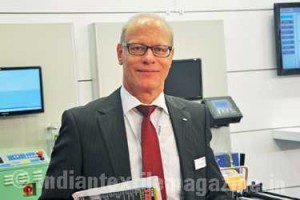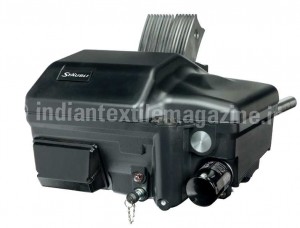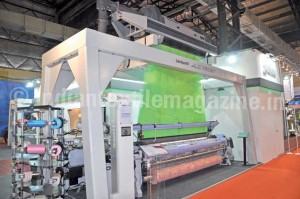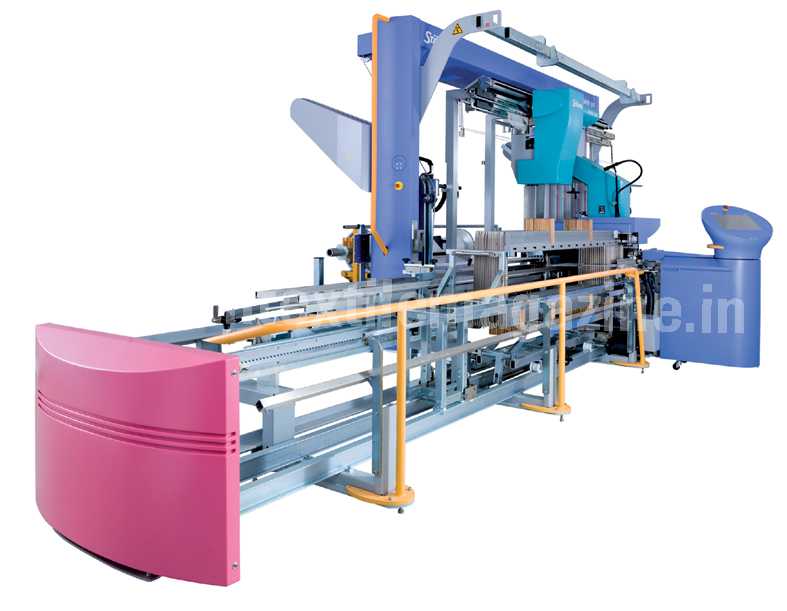
How was business at Stäubli during the first half of the current year? How does it compare with the previous year?
Official studies conducted in different countries clearly show that 2012 was not really one of the best years as far as the global output for textile machinery is concerned. This compared to some of the bumper years prior to the global crisis as well as some of the post-crisis years. This fact was, obviously, already known to us when we were compiling the budget for this year. A certain careful planning was the name of the game. In hindsight, it is clear that all the industry experts were wrong. The investment activity of weaving companies in leading markets was solid and better than expected during the first six months of this year. Stäubli was in a position to profit from this situation.
With the hope of business improvement, which are the markets showing promising growth for Stäubli? What is Stäubli’s global market share?
We talk about the usual claimants and leading markets, i.e., China, India as well as Turkey, amongst some others. As for our textile machinery products, we are still working hard to steadily improve our market penetration. There is always scope for improvement. It is up to Stäubli to keep on convincing our existing and prospective customers that we are the right place for their needs.

What are the factors driving this growth, and do you see this trend continuing in the coming years as well?
Factors range from providing the textile industry with national, State or communal incentives in different countries, safeguarding access to financial means, better growth prospects in countries like the US, more positive currencies for importing machinery, and so forth, or simply serving accumulated needs or backlog demands. It can also be because of new governments wanting to foster the industry. In situations like this, there can easily be an overreaction!
As a matter of fact, there are signs that markets will cool down during the second half of 2013. SME companies will definitely face tougher times getting their demands financed! There is still a recessionary trend in Europe. BRIC countries show negative industrial growth, and there is instability in the Middle East. Thus, this positive trend will almost certainly cool down as we go along.
What are the recent innovations that Stäubli can be proud of? Have these brought about any significant changes in the textile industry globally?
Well, generally speaking, we prefer if our customers are thrilled about our innovations, but coming back to your question, it is clear that Stäubli is paying a lot of attention to continuously innovate product offerings. Have our innovations changed the world? Well, one of the recent quantum leaps would, for instance, be the latest generation of our automatic drawing-in machine SAFIR S30 for delicate filament applications offering a 10-15 times higher productivity than comparable or manual work before.
Another example would be our latest version of shed forming devices, i.e., dobbies of our S3000/3200 series. Industrial weaving speeds in excess of 1’000 rpm are now feasible at less strain, ecological footprint and running costs. With our brand Schönherr, the new carpet weaving machine Alpha 500 is being introduced, offering unrivalled application opportunities. Finally, our new generation of SX Jacquard machines is well appreciated in the market.

The industry is clearly moving towards high speed weaving machines. The solutions offered by Stäubli play a very important role in this transformation. How do you see future trends evolving and the transformation happening in the industry?
Proper shed formation is key to any weaving machine, respectively any textile application, be it for simple, standard fabric designs of our daily life woven by cam motions, most complex patterns provided by electronically controlled rotary or negative dobbies to heavy-duty applications for technical and industrial fabrics or double-pile fabrics in carpet weaving. High-precision shedding at highest speeds for any given textile application is crucial for fabric quality and weaving machine efficiency.
Stäubli dobbies of the 3rd generation enable running speeds in excess of 1’000 rpm with, for example, the S3260 version. We are in constant contact with our OEM customers to manage a smooth transition for a proper integration of our new technologies.
It is one thing to provide end users with state-of-the-art technology using latest mechatronics, material pairings, electronics, drive concepts and so forth. An industrial transition, however, also entails a better process control and proper preparation and use of warp and weft materials, improved house-keeping activities as well as training of all staff or management functions involved. This has to be brought to the table by users of latest weaving technologies if high and quick returns are expected.

How is Stäubli’s presence in technical textiles? What are the products and solutions offered, and how do you see growth in this segment in the future?
We all keep reading about the growth potential of technical and industrial textiles. Stäubli is heavily involved with its textile products – be it with shed forming technologies such as cam motions, dobbies or Jacquard machines, warp tying, leasing or automatic drawing-in solutions or with weaving machines of our brand Schönherr.
Technical textiles are woven constructions and materials manufactured primarily for their technical performance and functional properties rather than their aesthetic or decorative characteristics. The list of technical textiles is long. Here are some examples:
* Agrotech (e.g., anti-hail nets, crop covers, erosion protection materials)
* Buildtech (e.g., tarpaulins, awnings, scaffold nets)
* Clothtech (e.g., interlinings, shoe components)
* Geotech (e.g., ground stabilization, erosion control, geosynthetics, geogrids)
* Hometech (e.g., carpet backings, mosquito nets)
* Indutech (e.g., conveyor & drive belts, bolting cloth, fibre glass, paper making felts)
* Medtech (e.g., gowns, drapes, woundcare, sterile packaging)
* Mobiltech (e.g., airbags, car-aircraft-rail upholstery, automotive carpets, helmets)
* Oekotech (e.g., woven filters, automotive insulation)
* Packtech (e.g., flexible intermediate bulk containers (FIBCs), leno & laundry bags)
* Protech (e.g., ballistics, fire retardant apparel & fabrics, NBC suits)
* Sporttech (e.g., tents, artificial turf, parachute fabrics, sleeping bags)
Stäubli has a lot of experience in providing solutions for active warp control in areas mentioned above or many other technical applications.
Talking about India, how important is the Indian market for Stäubli? How has Stäubli performed in the first half of this year in this market compared to the previous year?
India has built up a very strong and competitive weaving industry. It has high aspirations to further optimize and grow the industry. Stäubli’s strategy is to fully support this process. It goes without saying that India plays a key role in our daily business and future orientation of our company. There was more activity during the first six months of this year compared to the same period last year.
Stäubli has also been actively pursuing opportunities in automatic drawing-in machines for warp preparation in India. How is the response so far from the market and how do you see this market shaping up in the years to come.
The Indian textile industry is clearly seeing benefits of more advanced solutions for a seamless preparation of weaving beams. Adhering to quick response demands, better fabric quality as well as calls for higher productivity and rationalization in weaving suggests that automatic drawing-in machines are now fully recognized and accepted by the industry. The benefits of automated beam preparation are seen only if a proper process offers a faultless drawing-in of ends into drop wires, healds and reeds in one operation.